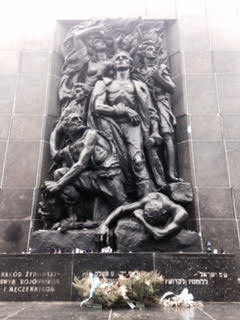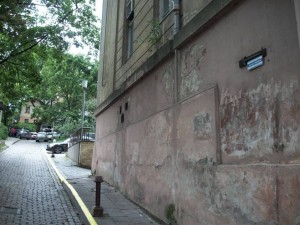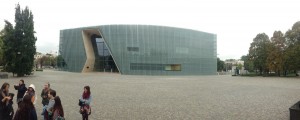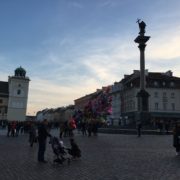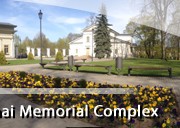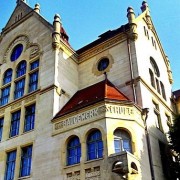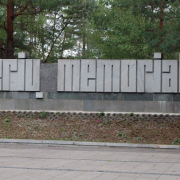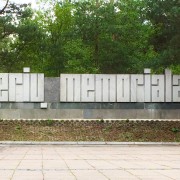One History, Two Narratives
By Erin Martha Kenney
During our travels in Lithuania and Poland, we visited various museums dedicated to the remembrance of countless historical events, including the Jewish life which once thrived in these areas. It was at these museums that I began to realize the existence of incongruities within the national narratives of both countries. I began to look at the actual product of the museums as well as their placement within cities and ultimately how these factors affect a visitor’s perception of a nation’s historical narrative.
As the capitals of Lithuania and Poland, one can image that both Vilnius and Warsaw receive a multitude of tourists each year, many of whom likely visit the cities’ museums. Seeing that these countries have been greatly affected by the events of the Second World War, I had assumed that both cities would have established institutions to remember the victims of the Holocaust. While my assumption was correct, the extent and manner of remembrance which I expected was equally present. Within this essay, I will reflect upon how the presentation and placement of two museums dedicated to Jewish life: the Holocaust Museum (Green House Museum) in Vilnius, Lithuania and the Museum of the History of Polish Jews (Polin) in Warsaw, Poland, impacted my own understanding of the importance of Jewish history to Lithuania and Poland.
Prior to entering each of the museums, their locations inadvertently revealed the degree of each museum’s significance to these country’s historical narratives. In my opinion, the Green House Museum would have easily been missed by any visitor to Vilnius. Not only is the museum not centrally located within the city’s tourist areas, but one must also have a keen eye to spot the institution’s signage. Had it not been for our professors, my travel companions and I would have certainly missed the 6 inch by 12 inch sign affixed onto the building. Upon finding the address, visitors must walk up a rather steep driveway to an older building, which I had not anticipated to be the museum. The pseudonym for the Holocaust Museum, “Green House”, quite literally reflects the outer look of the building; a green house consisting of several rooms, each designated to retelling a story of Jewish life and its ultimate destruction in Lithuania. While the content within the museum provides great insight into the former lives of Lithuanian Jews throughout the twentieth century, I felt that the lack of available space greatly took away from the museum’s significance. Rather than focusing all of my attention on our guide or the exhibits, I consistently found myself thinking about how scarce the resources of the Green House must be. Despite Lithuania’s implementation of a Jewish history museum, I believe that the inadequate setting demonstrates that the remembrance of Lithuanian Jews serves as merely a backdrop within the nation’s larger historical narrative.
In contrast to the location of the Green House, Polin is in what appears to be a rather centrally located place in Warsaw, making it logistically more accessible for visitors. Adding to the importance of this institution’s placement within the city is its historical significance as the site of the former Warsaw Ghetto during the Second World War. Rather than a simple sign pointing out that you have arrived at the museum, visitors to Polin are greeted by a grandiose monument dedicated to those who fought in the Warsaw Ghetto Uprising. Contrary to the exterior of the Green House, Polin is a large building with unique architectural designs which would attract the eyes of any passerby. Its monumentality ultimately conveys that Jewish life is significant to the Polish historical narrative. Rather than a few rooms memorializing Jewish life, the Polin Museum consists of eight galleries filled with interactive content retelling several hundred years of Jewish history. As a visitor to the museum, one could see that a great deal of thought and investment was put into the creation of Polin. With the ability to spend countless hours in the galleries, it appeared to me that the history of the Jewish people is far more significant to the Polish state and its history. In my own experience, as demonstrated through the placement and presentation of the Green House and Polin, it appears that the efforts to remember and memorialize Jewish life within Lithuania and Poland are not comparable. After exiting Polin, the lack of funding and attention given to the Green House became even more apparent. Such incongruities have truly illustrated the holes within the narratives of these countries, a problem which I feel needs to be patched to prevent the reoccurrence of history.

